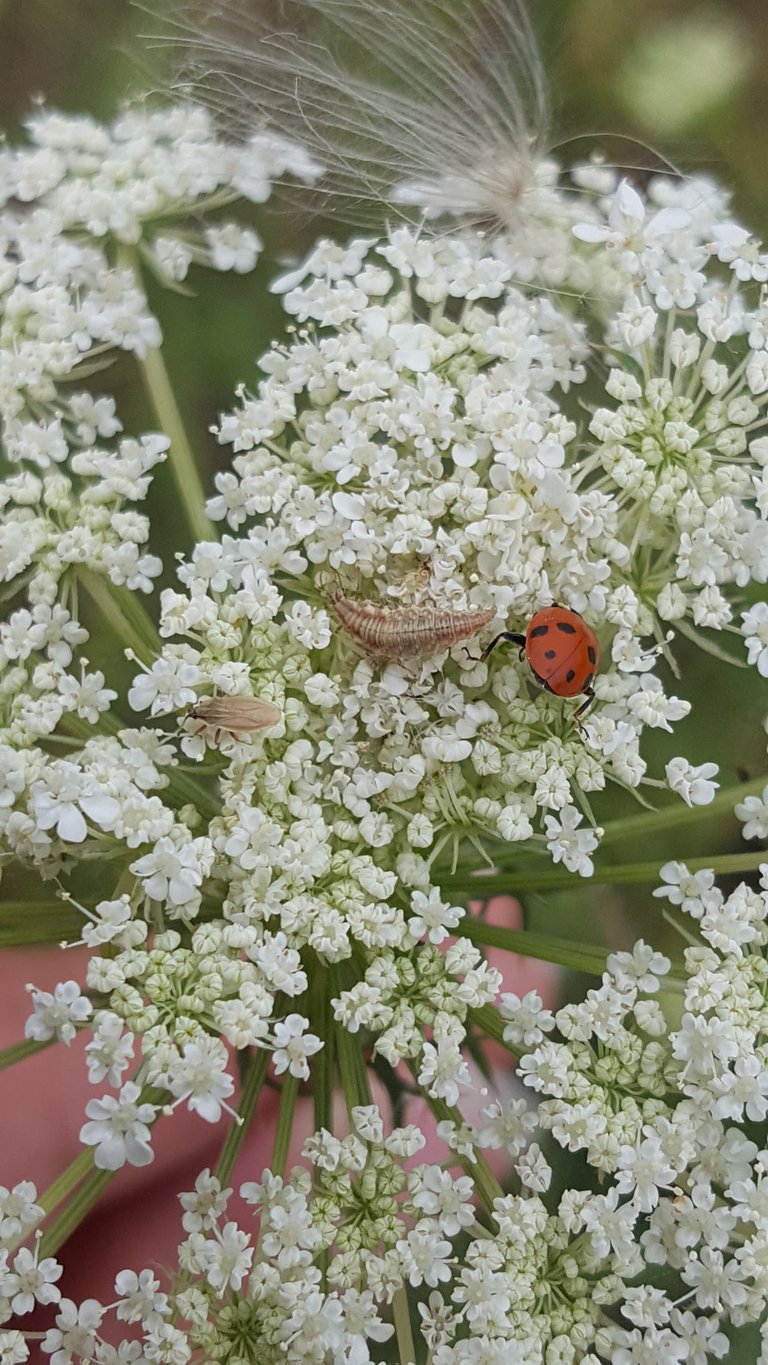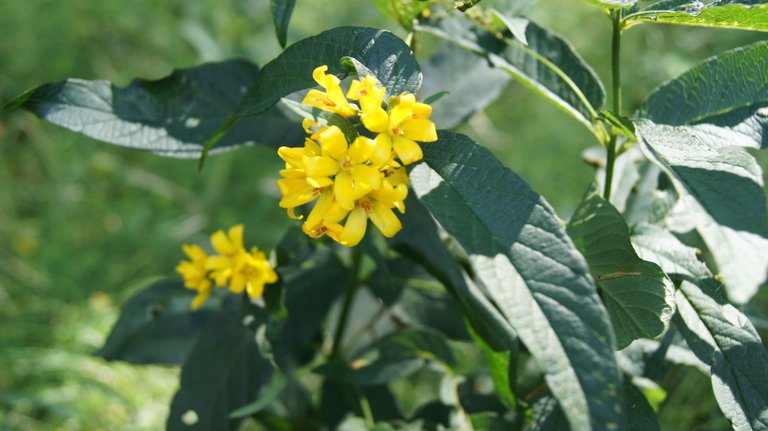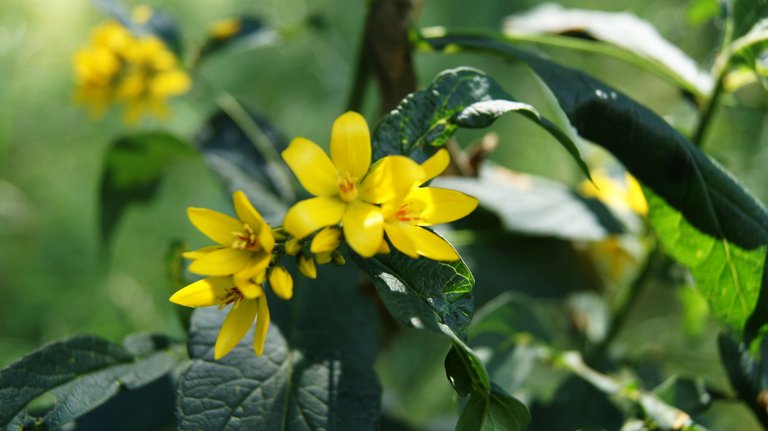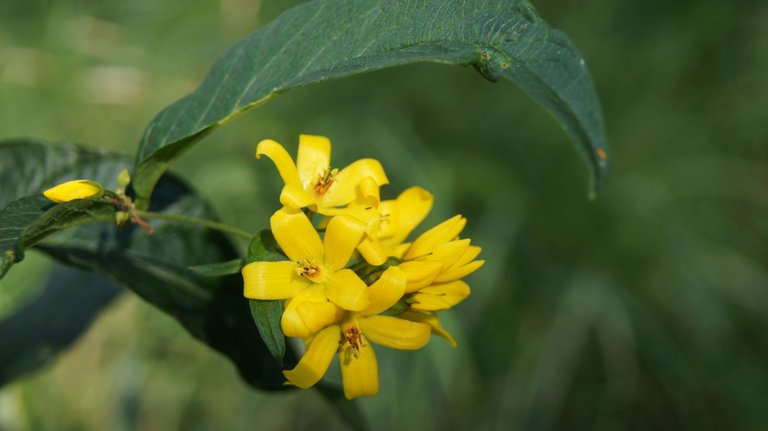It's time for the weekly nature identification thread! Post pictures of plants, animals, rocks, or other cool stuff that you've photographed but can't identify, and I, along with anyone else who would like to help, will try and help you identify it. I'll be making some changes to it- most notably, I'll be using the SBD proceeds from this post to give out @steembasicincome memberships to people who post stuff to be identified or help me identify photos.
Polypodium glycyrrhiza, also known as licorice fern. Licorice fern's rhizome (a stem that grows underground, sending out roots) tastes rather like licorice, hence the name, and was frequently eaten by Native American tribes across the Western United States and Canada. The little fern is an epiphyte (an organism that grows on living plants) and can frequently be found growing on maple trees. The underside of its leaves have tiny rows of dots where its spores are released from. I'm not a huge fan of the taste on its own, but I like putting it in whiskey to flavor it. The fern in the upper right is a sword fern, rather than a licorice fern. [Image source]
Remember: The most important information you can give along with any photo to be identified is its geographical location. This narrows down the range of possibilities more than any other info you can provide.
Plants:
Along with the photo, add where you found it, the time of year, the approximate altitude, and any interesting scents or textures not caught in the photo.
Animals:
Along with the photo, add the location you found it, the time of year, the sounds it made, any interesting behaviors, and any other features not caught well in the photo.
Rocks:
Along with the photo, add the location you found it, a description of the terrain it was found in, whether it was attached to a rock outcrop or found loose on the ground or buried in the soil, a description of its texture (especially its grain size), and a description of its weight and density. Fossils are included in this category. (Despite my greatest expertise lying here, rocks tend to be some of the hardest things to identify in a photo.)
Fungi:
I will not be identifying mushrooms and fungi for foraging purposes. Mushrooms should really only be identified for foraging purposes in person and by an expert. If another contributor wishes to identify them, that's their call, but I encourage them to be similarly cautious. I might also try to identify a few fungi that are clearly not being looked at for the purposes of eating, but that'll be a case by case decision.
@snowyknight, @artofwisdom, @roxy-cat, @shasta, & @motordrive all earned @steembasicincome memberships for submitting to the last nature identification thread or helping identify submissions. Congratulations!

Thank you, @mountainwashere
Four in one! One is a ladybug, but the other two critters are mysteries to me. And then there is the plant.
These were found in Mörbisch, Austria in July. This is an area very close to the Hungary border and close to a very large lake, so there is a fair amount of water around.

Hello! The middle thing looks like a common slug? Does that seem right, or too small?
It is too small and the wrong shape to be a slug. It has a more flat body with sections. I uploaded a big picture, but in the comment it is reduced to just a little part. If you right-click and open the image in another tab, you can see the full resolution.
Ah ok cool. I had to try as it "looked" like a slug...
Thanks @yvesoler...
Perhaps Peucedanum ostruthium https://en.wikipedia.org/wiki/Peucedanum_ostruthium or Chaerophyllum hirsutum https://species.wikimedia.org/wiki/Chaerophyllum_hirsutum or some of the 'Umbellifers' like those https://www.google.com/search?q=baldaszkowate&client=firefox-b&source=lnms&tbm=isch&sa=X&ved=0ahUKEwiV5szPjtHcAhWICMAKHe69CWYQ_AUICigB&biw=1280&bih=673
Masterwort looks right, Peucedanum ostruthium. Any ideas on the two critters?
tried to find it - to no avail so far.
Insects are always the trickiest given their large numbers. This is why I suggested the iNaturalist project. Then we could put together the power of a Steemit with all the naturalists in the world.
Ok how about this... I looked at the higher res photo.
Seems like some sort of beetle.
The Common Rough Woodlouse, or Porcellio scaber?
It looks like a beetle of sorts. Does this seem roughly right @yvesoler?
I hadn't thought of a woodlouse before. I am not sure if it is exactly the one you mention, but it is definitely in the family. Fantastic!
i am following you and voting you please follow and vote me back
Forest, Northern Poland, 2 weeks ago:



Maybe Lysimachia punctata? Dotted loosestrife.
The Polish name (and blame google if it's not right 🙂) - tojesc kropkowana
http://www.nature.kamela.org/Flowers/Flowers.html
Thanks for help! It is Lysimachia - vulgaris:
:)
This was my first guess then I read again your comment: Northern Poland. Lysimachia vulgaris is usually found on the South Eastern Europe.
But you saw the plant, I just watched some great photos. Vulgaris it is. 🙂
Lysimachia vulgaris
Lysimachia vulgaris, the yellow loosestrife or garden loosestrife, is a species of herbaceous perennial flowering plants in the family Primulaceae. It is native to wetlands, damp meadows and forests of south-east Europe. It is a tall plant with an upright habit, 50–150 centimetres (20–59 in) high, with erect panicles of conspicuous yellow flowers. The edges of the petals lack the fringe of hairs seen in L. punctata, and the hairy sepals have a conspicuous orange margin.
Have you ever thought about creating an iNaturalist group project with all of these? It could be fun for all of us to upload our curiosities there and involve a wider community in answering. It will also be a great way to cross-share information across multiple knowledge groups. What do you think?
It seems like a pretty cool idea- might have some time to take a look at it before the next Nature identification post.
Hmm.. needs special aps etc to run off the website and has some IP transfer which is a bit strange in a tech savy place like SF:
"By submitting Content to iNaturalist for inclusion on the Website, You grant iNaturalist a world-wide, royalty-free, and non-exclusive license to reproduce, modify, adapt and publish the Content solely for the purpose of displaying, distributing and promoting Your observations and journal." - from the terms and conditions of the website...
Not sure that this is as good as putting this on a fully-functioning blockchain (aka here).
Nevertheless, there is room to try such a larger scale project (although @mountainwashere contest cannot be improved on!) somewhere within the steemit world...
As a terms and a conditions, if they are using it solely for the promotion of the observations, that makes sense. It is an educational project, so they need the rights to be able to publish the observations made publicly. What do you see as the problem.
The part I like about it is that you can create a geographical project in one place. I find this extremely educational to understand not just the plants and animals of the area, but to start understand how different elements (such as temperature, weather changes, climate change, etc.) affect them. Plus, it provides reference material that can be used by other groups and organizations.
Fair enough.
Good points all and crowd-sourcing is a good way to share ideas. Sorry for sounding a bit skeptical, happy to look into it more.
i'm also skeptical about projects of listing and mapping to 'help the resource managers' ...
Ok cool. Thats @artofwisdom.
Good to know that I am not alone at being skeptical (aka n = 1). It probably is a well thought out idea that is being run by a good organization, but...
I understand being skeptical, I can be that way as well. :)
Great! If you decide to do it, please let me know. I would love to help any way I can. I have seen whole towns that have created a mapping of their environment. I would love to see a Steemit project take shape.